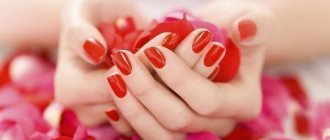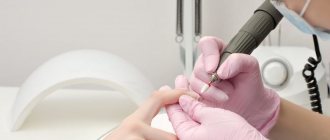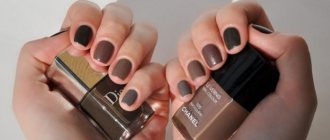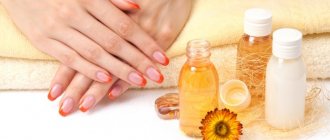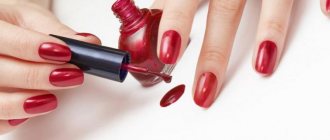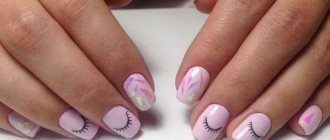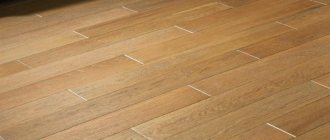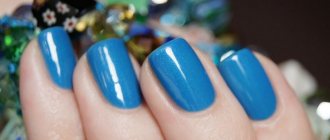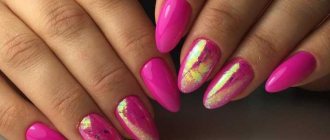Many women are interested in why hangnails appear. They can arise for various reasons. But the most common of them is improper manicure. Despite the fact that many people know about the advantages of unedged manicure, some women still prefer edged ones. Although it is in the case of trimmed manicure that most often burrs appear on the fingers.
Causes of hangnails
Dry skin with increased sensitivity is most susceptible to the formation of hangnails. Constant dryness of the skin when exposed to provoking factors leads to thinning and loss of elasticity in the area around the nail.
Why do burrs often appear? The fact is that even the slightest impact on such skin leads to cracking.
Provoking factors
The reasons for the appearance of this problem in a baby include the same factors as in adults. The main reasons include:
- poor hand hygiene
- nail biting
- injury to hands and nails
- eating a lot of sweets
The main factor in the appearance of damaged hangnails on a child’s fingers is dry and sensitive skin. Parents force their children to wash their hands frequently, which is one of the reasons for this problem.
A hangnail on the finger often appears on dry skin, so it is necessary to protect the child from unfavorable situations that could damage the cuticle.
If you do not pay attention to this, then with a slight impact, the hangnail on your fingers will crack and injure the skin.
The child has a habit of biting his nails. Such damage constantly leads to the appearance of cracks around the cuticle.
Parents should monitor their baby's hand hygiene and explain to him why he should not bite his nails. Also, children regularly get carried away with toys, so the child’s delicate skin may be injured during play and a hangnail may appear on the finger.
Adults are required to take immediate action and treat the damaged area. If after some time a severe swelling is detected in the child, then you should immediately seek qualified help.
Sensitive and dry skin on the hands is more susceptible to the formation of hangnails. In this case, under unfavorable conditions, the skin around the nails quickly becomes thinner, loses its elasticity and easily cracks or is injured at the slightest impact. Additional hardening of the skin is facilitated by prolonged contact of hands with water and detergents in everyday life, working with chemicals without the use of protective gloves, overdrying or chapping, especially in the winter season, etc. The appearance of hangnails on the fingers is made even more likely by the lack of proper daily care hands, nail biting (onychophagia).
Cuts
Question : What are cuts on the nails after a hardware manicure and how to avoid them?
Answer:
Certain types of gel polish, not just extended nails, cannot be removed with a remover, only by filing. In this regard, cases of cutting of nail plates are increasingly common, when self-taught masters or novice masters without accumulated experience take up the matter.
There are 5 simple ways to avoid cuts on your nails at work:
1. Work with the right cutters
To remove gel polish from the nail plate, it is recommended to use carbide or ceramic cutters with red or blue notches, indicating a soft to medium abrasive surface of the nozzle. The best shapes are barrel and flame (corn) with a blue notch. The cutting speed of these cutters is 17,000-20,000 rpm. Check out our Router Bit Guide , which recently added a Questions and Answers section.
Corn cutters and rounded cone for removing gel polish
2. Correct hand rest when removing the coating
Often cuts occur due to inaccurate, sudden movements of the master. Proper hand rest will help avoid this. You need to rest the little finger of your right hand on the slightly outstretched fingers of your left hand, in which you are holding the client’s finger being treated (for right-handed people).
When there is good emphasis on your fingers, the cutter glides smoothly and easily. It is necessary to work in smooth, long movements in the direction from the cuticle to the free edge of the nail, removing only the color and top coat. The base can be left untouched; it will serve as an additional reinforcing layer for the next coating and will allow you to avoid cuts in this one. It is important to clearly distinguish the border between the base and the natural nail.
When treating a nail along the perimeter of the cuticle, you need to “roll” it to the side, move the side rollers, rest the little finger of your working hand on the tip of the finger being treated and remove the gel polish.
3. Position of the cutter in relation to the nail
It is necessary to hold the cutter parallel to the nail, do not place it vertically or at an acute angle. You can’t put too much pressure on the cutter, since the layer of gel polish, especially near the cuticle, is very thin. After removing the varnish, a thin strip of color may remain at the cuticle itself, which can then be easily removed with a thin corundum cone when performing a manicure. The corundum cone and fissure cutter should also be positioned parallel to the nail when working - this is a mandatory rule to avoid cuts.
4. Working with a nail file in disputed areas
If you have already removed the coating using a hardware cutter, but there are still controversial areas where you can easily file the nail even with minimal pressure, use a regular file for natural nails. Use it to cut off the remaining material from the surface of the nail, and treat the areas near the cuticle and side ridges with a green corundum cone of extra-soft abrasive at a speed of 20,000 rpm. At the end, treat the nail with a sanding buff to give it shine.
5. Full cuticle opening is mandatory.
Using a fissure needle cutter and a corundum cone, it is necessary to open and lift the cuticle by 90°. Only after this can you cut it off with a ball. Otherwise, you will have to press the nozzle under the skin, and this is an additional risk of the same cuts.
Cuts
Question : What to do with cuts on nails after a manicure?
Answer:
If cuts could not be avoided, the nails were damaged or damaged by a cutter, several ways to solve the situation will help:
- Light, barely noticeable cuts without bumps can be leveled with a buffer, the difference will be almost imperceptible, and the coating will lie smoothly.
- If the cuts are deep, and mainly in the cuticle area, you will have to level them with biogel or a rubber base for gel polish, otherwise the bumps will be visible and the nails will react more sensitively to temperature changes and physical contact.
- Deep cuts will not go away; you will have to wait until they have completely grown from the nail plate, all the while strengthening it with a coating or providing adequate nutrition, moisturizing and protection with wax or oil from external factors, if there is no coating.
- When making cuts, it is recommended to do any housework with gloves, as nails are thinner and more sensitive.
- With very deep cuts, the nail plate may not align even after the damaged areas have healed. You will have to constantly level it with biogel or gel/acrylic for extensions.
Question : How can you tell if cuts have formed on your nails after a manicure?
Answer:
- The surface of the nails became wavy, bumpy, and heterogeneous.
- They began to react more sensitively to physical contact and temperature changes.
- As the nail plate grows together, the color changes to a darker, purple-pink color, and the border between the smile of the growing nail and the new nail in the growth zone is clearly visible.
- As the nail grows together, it becomes thinner and more brittle at the free edge; it has to be constantly strengthened with a base or gel.
Question : How to remove gel polish with a machine so that there are no cuts?
Answer:
It is necessary to choose the right cutter and take into account the thickness of the applied material. Sometimes it can be minimal, it can even be compared to two layers of regular polish, but often there is a fairly thick layer on the nails.
Depending on the thickness of the layer, the master adapts the removal algorithm:
- For thin coatings, it is better to take nozzles with shallow notches less than 1 mm. For thick ones - with deep grooves. A cutter with a cross pattern does a good job of removing thick coatings. With a thin layer of gel polish, it is better for a novice master to choose attachments with a mild abrasive. Removal will take a little longer, but the risk of cuts will be minimized. This is the most relevant approach at the practice stage, when you need to get better.
- Algorithm for removing medium thickness gel polish . RPM – from 20,000 to maximum. We start from the central part and move towards the free edge. We work not with flat or digging movements, but with arched movements. We remove the thinnest areas with remnants of gel polish by moving the cutter in the opposite direction for smoothing. The second zone is work along the cuticle. When there is little material left, we again work on smoothing, in the opposite direction. The smallest remains can be removed with a diamond cutter at the stage of stripping the side ridges and cleaning the pterygium.
- When working with a very thick layer of coating , you can start not from the free edge, but immediately remove the entire hump from the central part, looking at the end of the nail to control yourself. If there is a lot of material, we go for resistance, in areas with a lower coating density we work back and forth, for resistance-smoothing. This is the most effective approach for treating small and thin areas.
For removal, carbide and ceramic nozzles with a pronounced flat central part are recommended so that a large area of material can be captured. The second aspect is a thin spout for accessing hard-to-reach areas near the side rollers and cuticle. Optimal shapes are cone, cylinder, rounded cylinder, corn.
Traditional treatment
Knowing how to properly treat hangnails on your fingers can prevent complications from occurring.
There are several ways to remove this defect around the nail fold:
If hangnails appear in a small child, then the mother should follow these steps:
It often happens that a hangnail is torn off, and the finger breaks out after a while. If the inflammatory process develops, you should immediately contact a surgeon.
The acute stage is treated with conservative methods: warm compresses are effective, the finger is kept in an elevated position outside of procedures. If necessary, your doctor will prescribe oral antibiotics to prevent an abscess.
After we have covered the range of reasons why hangnails appear on fingers, we can move on to how to deal with hangnails. This fight must be comprehensive and carried out both from the inside and outside, both symptomatically and through general strengthening of the body. So, the following methods will have the greatest effect:
- Normalization of nutrition. Include more foods containing vitamin A in your diet. It will reduce skin dryness and speed up its regeneration. Eat carrots, beef liver, chicken eggs, especially the yolk. Taking fish oil or vitamin A in capsule form will also have a good effect;
- A good way to remove and cure hangnails on your fingers is the systematic and regular use of local antiseptics. Wash wounds with hydrogen peroxide. If a hangnail on your finger becomes inflamed, you can switch to using levomeitin and tetracycline ointments. In addition, there are numerous homeopathic remedies on sale that effectively disinfect and heal the skin of the pre-nail ridges;
- A good remedy for hangnails is olive oil baths. It is heated to a pleasant temperature, and fingers are immersed in it for 10 - 15 minutes. The skin becomes soft and elastic. By the way, you can use not only olive oil, but also any vegetable oil. You can use baths with sea salt and lemon juice or bergamot oil;
- Baths can be considered an emergency measure. After the hands have become soft and steamed, the hangnails are cut off with sterile scissors. After this, the skin is additionally treated with hydrogen peroxide;
- Also, when answering the question of how to get rid of hangnails on your fingers, we can recommend masks. A mask made from crushed aloe and Kalanchoe leaves works very well. The mixture of these sheets must be crushed to a pulp, and the proportion should be 1 to 1. Apply the mask to the pre-nail ridges or those places where there are burrs and wrap it with film, and put on fabric gloves on top;
- Manufacturers of cosmetics are also trying to answer the question of how to get rid of hangnails on your hands. Currently, there are a large number of specialized products on the market that help get rid of hangnails. These are various creams and gels, as well as antiseptic patches with special impregnation. Many of these remedies have a very good effect.
In conclusion, let’s say that by regularly moisturizing your skin, you can forget about hangnails forever. Apply the cream with massaging circular movements onto the skin of the nail folds twice a day and regularly treat your hands with an antiseptic. Then very soon you will be able to forget about the problem of burrs.
In addition to all the above methods, you can try various creams to treat hangnails. If you have dry skin, then you may have this problem. Therefore, you need to know how to cure hangnails on your fingers. Cream for hangnails on fingers:
- any baby cream
- Dexpanthenol cream (analogues of Panthenol and Bepanten)
Diagnostics
Vivid symptoms do not raise doubts about the diagnosis. Particularly noteworthy are cases where hangnails, with proper care and the absence of provoking factors, form again and again. In this case, additional research is needed:
- blood chemistry
- spectral analysis of hair for microelements
- possibly a test for vitamin levels in the blood
- stool examination for dysbacteriosis
Vitamin deficiency may also cause cracks in the corners of the mouth. If complications arise, when the finger breaks, a bacterial culture of the purulent contents is carried out to determine the etiological pathogen and sensitivity to drugs.
My results of using cosmetics in the fight against hangnails
Having tried several means of combating hangnails, I came to conclusions about the effectiveness of various cosmetics.
In order to get rid of hangnails, there are a lot of inexpensive folk remedies that are easy to prepare at home:
- Baths with sea salt and essential oils. Any sea salt and emollient oil will do: jojoba, bergamot, tea tree. The most important thing is not to make the water too hot, and keep your hands in the bath for 5-10 minutes. After the procedure, it is best to lubricate your hands with warm olive oil or any hand cream.
- Mask of Kalanchoe leaves. Grind the leaves of the plant to a pasty state and apply to the skin around the nails, wrapping each finger with cling film. After 10-15 minutes, rinse everything off and lubricate your hands with cream. Kalanchoe has a regenerating effect and will speed up the healing of the skin after removing a hangnail.
- Olive oil bath. Heat the oil and put your hands in it for a few minutes. If there are no open wounds, you can add a few drops of lemon juice. After the procedure, lightly blot your hands with a paper towel and allow the remaining olive oil to be absorbed.
Side bolsters
Question : Why do the side ridges quickly become rough after a hardware manicure?
Answer:
The side ridges can become rougher faster or due to too intense and deep skin removal with a cutter in this area, when the process of growth of new cells to protect the tissue is activated. This usually causes the skin to become more sensitive.
Active moisturizing, nourishing and protecting the rollers with wax immediately after a manicure and during the first week after the procedure helps.
During hardware manicure, the side rollers are processed with a diamond fissure cutter and a cone with a rounded end with a blue or red notch at a speed of 18,000 - 20,000 revolutions. The cutter lies parallel to the finger in a position either above or below, whichever is more convenient for you to work with. Rotation mode – from the finger.
Complications
If you think that hangnails are a harmless phenomenon, then you are mistaken.
Like any damage to the skin, hangnails can become a gateway for infectious agents of bacterial (streptococcus, Staphylococcus aureus, Pseudomonas aeruginosa) and fungal (dermatophytes, candida) infections.
Post Views: 1,274
